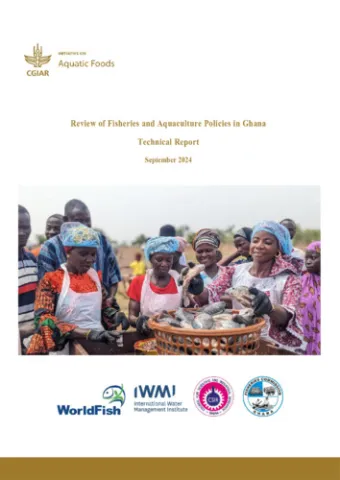Review of fisheries and aquaculture policies in Ghana: technical report

Abstract
This review report provides an overview of Ghana's fisheries and aquaculture sectors. The report summarizes and highlights the formal policies and governance structures related to aquaculture, inland fisheries, and marine fisheries in Ghana. The report identifies the legal frameworks and strategies governing these sectors and the plans and regulations in place. The aquaculture sector is an expanding subsector that has greater potential to increase and meet the increased demand for fish in Ghana, which is currently being met through imports.
The report emphasizes that fisheries resources in Ghana are derived from marine, inland, and aquaculture sources. It notes a decline in marine fish production but a steady increase in inland and aquaculture fisheries production. The National Aquaculture Development Plan aims to further increase the market share of commercially farmed fish.
Furthermore, the report underlines the significant contribution of fisheries and aquaculture to Ghana's Gross Domestic Product (GDP), accounting for 4.5% of the National GDP and 12% of the Agriculture GDP. It also highlights the importance of fish as the main source of protein for many households in Ghana, which is higher than most countries within the Sub-Saharan region.
The report also highlights some of the Government of Ghana’s programs and interventions to increase aquaculture production. Such interventions include the Aquaculture for Food and Jobs initiative, which is linked to the broader Agriculture for Food and Jobs initiative. This intervention increases aquaculture production by supporting women and youths in pursuing fish production by providing initial capital support, which is complemented by capacity development, quality fingerling provision and inculcating the view of aquaculture production as a serious business and employment creation venture.
The report concludes by highlighting some of the points below as key considerations for
sustainable aquaculture production.
• The importance of linking policy and practice.
• The key role of applied research.
• Policy harmonization.
• Importance of innovative financing models.
• Ensuring that women and youths are included in aquaculture investments.
• One Health perspective to deal with the threat of fish diseases.
